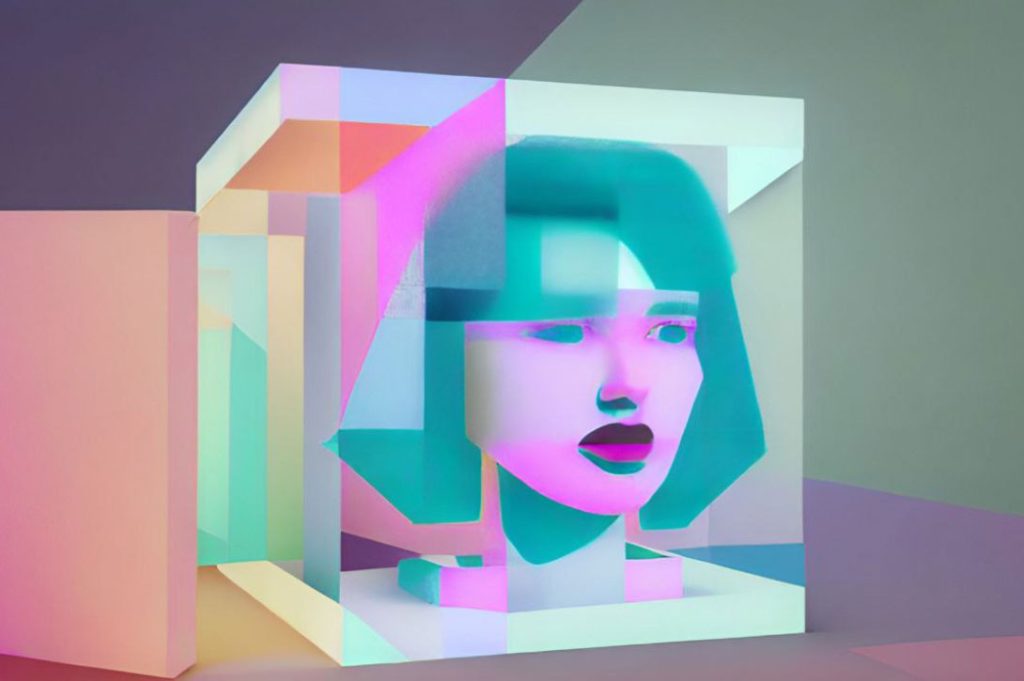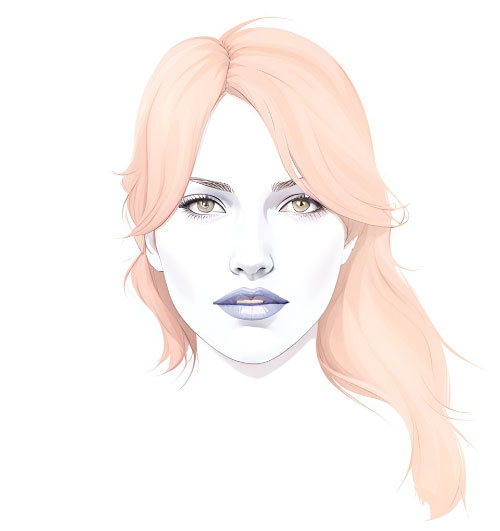Mastering Facial Harmony: A Deep Dive into the Middle Third of the Face
In the multifaceted realm of hairstyling, understanding facial features and proportions is paramount. While much emphasis is placed on the overarching facial shape, delving into the subtleties of facial zones provides a nuanced approach. The middle third of the face, encompassing the eyes and nose, serves as a critical determinant in hair design. This article illuminates the strategies to harmonize these features, enriching the hairstylist’s repertoire.

Close-set Eyes: Spreading the Horizon
Close-set eyes can often hint at a longer, more narrow facial structure.

- Styling Strategy: Propel the hair back and away from the face, particularly at the temples. Implementing a side movement from a diagonal back part coupled with slight elevation can add dimension. Strategically lightening the hair corners near the eyes can craft an illusion of breadth.
- Underlying Logic: Creating divergence near the temples and augmenting the hair’s width can balance the narrow facial appearance, thereby making the eyes appear more evenly spaced.
Wide-set Eyes: Bridging the Gap
Conversely, wide-set eyes typically correspond with rounder or more square facial types.

- Styling Strategy: Opt for an elevated half-bang, and ensure the hair is marginally darker on the sides compared to the top.
- Underlying Logic: This methodology adds facial length and equilibrates the eyes, imparting a balanced visual appeal.
The Challenge of the Crooked Nose
A misaligned nose can be a distinct feature, requiring strategic styling.

- Styling Strategy: Asymmetrical styles that lean away from center are most flattering, diverting attention away from the nose. Direct symmetrical styles might inadvertently emphasize the facial asymmetry.
- Underlying Logic: By introducing an off-center balance, the gaze is pulled away from the nose, placing emphasis on other facial features.
Wide, Flat Nose: Elongating through Hairstyling

- Styling Strategy: The key lies in directing the hair away from the face coupled with a central parting.
- Underlying Logic: This strategy amplifies the face’s verticality, creating an illusion of a more elongated and refined nose.
Long, Narrow Nose: Broadening Perspectives

- Styling Strategy: Steer clear of styles that are tapered closely to the head on the sides, with pronounced height on top. The hair should be styled away from the face, generating an impression of amplified width.
- Underlying Logic: This approach counters the long, narrow facial features, bestowing a more harmonized appearance.
Small Nose: Maturing with Style
A petite nose can sometimes evoke a youthful essence.

- Styling Strategy: For adults seeking a more matured aura, hairstyles that aren’t reminiscent of youthful designs are crucial. A sweep off the face, creating a trajectory from the nose to the ear, coupled with elevating the top hair away from the forehead can effectively elongate the nose.
- Underlying Logic: This technique adds maturity, distancing from a child-like demeanor, and harmonizes facial proportions.
Prominent Nose: Diverting the Limelight

- Styling Strategy: Introduce hair towards the forehead, ensuring softness envelops the face.
- Underlying Logic: By focusing on facial softness and contouring the hair around the face, the attention shifts away from the nose, yielding a balanced countenance.
Conclusion
The middle third of the face, with its intricate features, stands as a testament to the intricate art of hairstyling. An adept hairdresser, armed with knowledge and skill, can transform these features, crafting a visage that radiates confidence and elegance. The interplay of hair design with the eyes and nose is not just a stylistic endeavor but an ode to the profound understanding of human anatomy and aesthetics.






